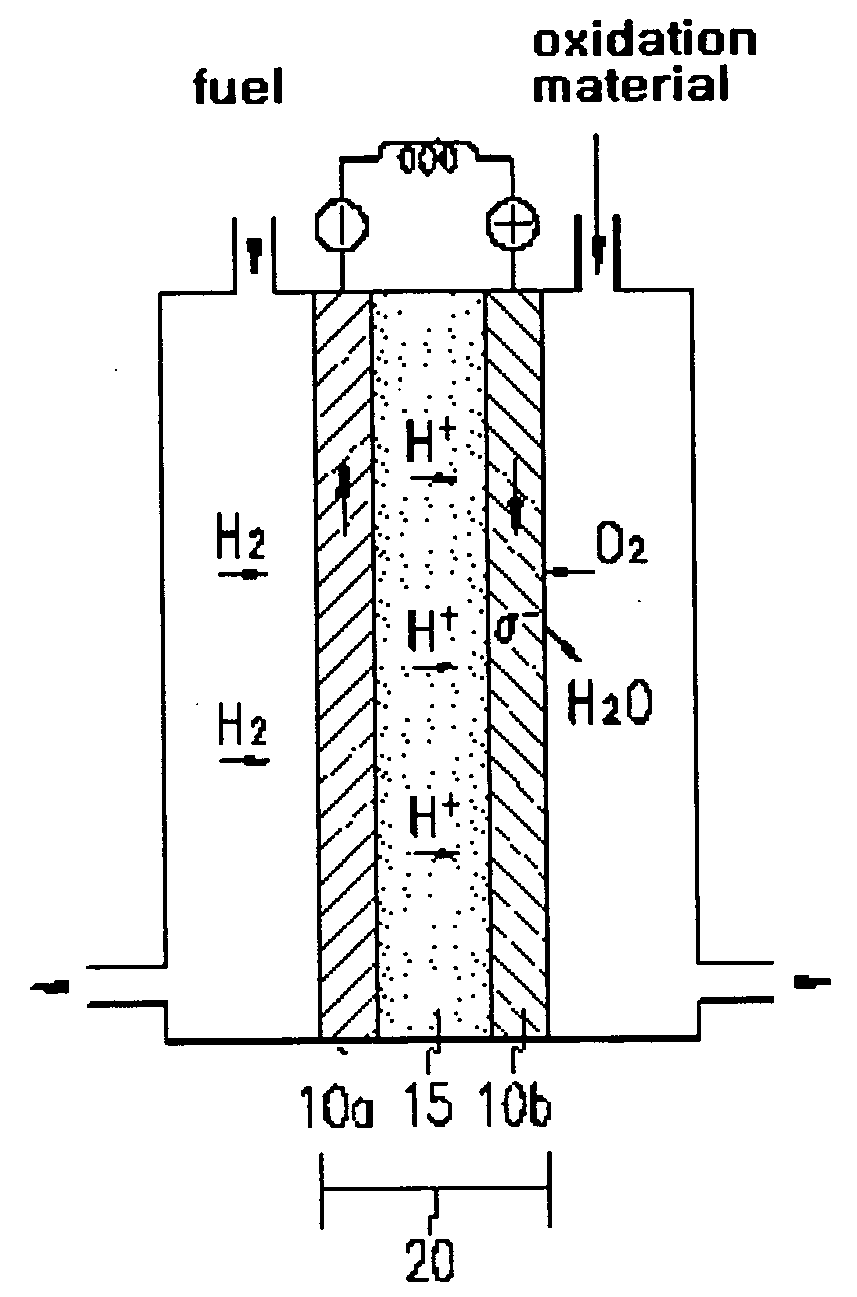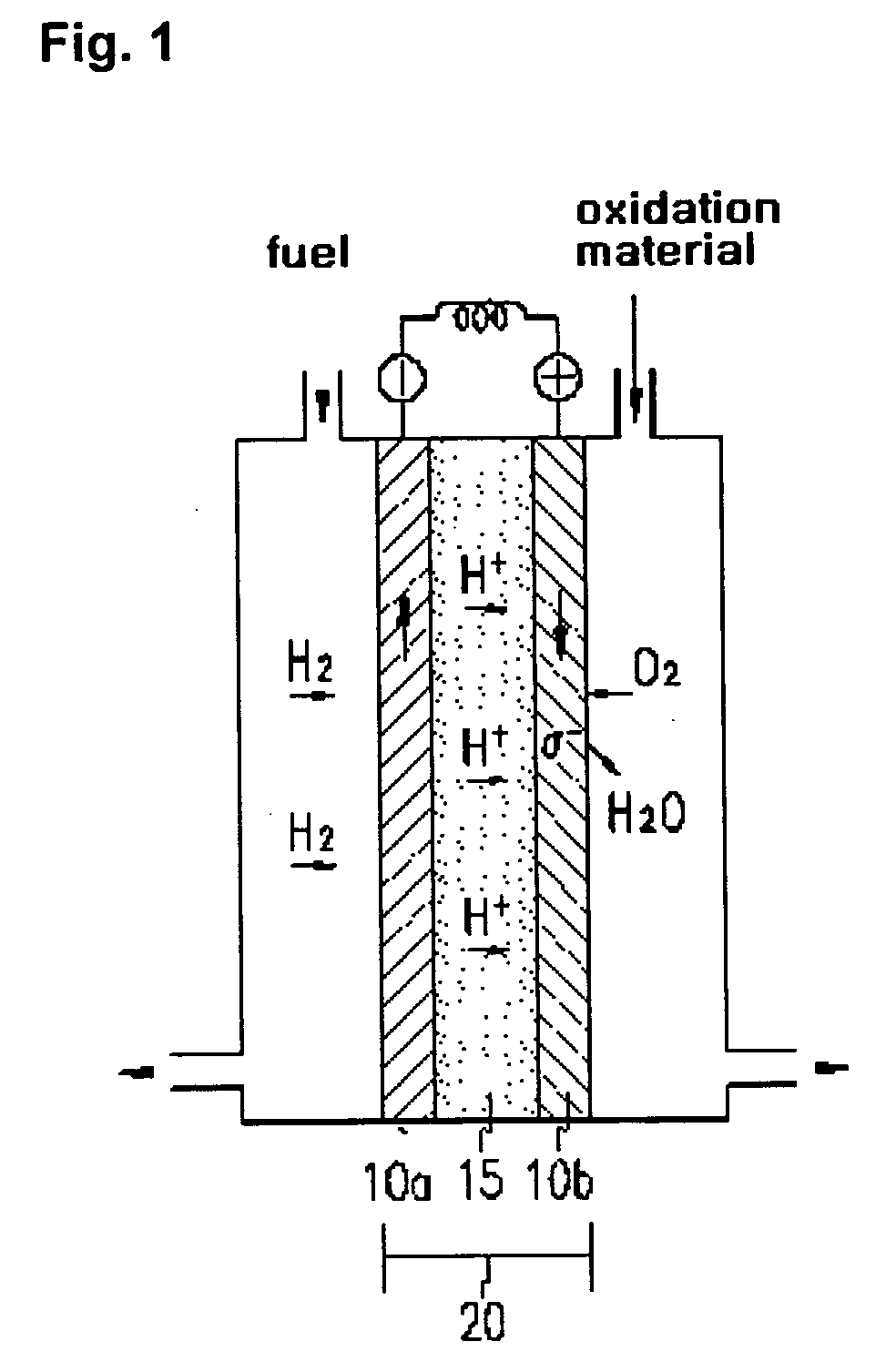Composite material for bipolar plate
a technology of composite materials and bipolar plates, applied in the direction of non-metal conductors, sustainable manufacturing/processing, final product manufacturing, etc., can solve the problems of high manufacturing cost, limited flexibility in stack design, brittleness and porous solid graphite, etc., to achieve low cost, good workability, and chemical and mechanical stability
- Summary
- Abstract
- Description
- Claims
- Application Information
AI Technical Summary
Benefits of technology
Problems solved by technology
Method used
Image
Examples
example 1
[0037] 100 g (0.54 mol) of benzidine, 102 g (1.09 mol) of phenol, and 33 g of paraformaldehyde were agitated in a Brabender mixer and heated to a temperature of 130° C. for 15 minutes while agitating. 115 g of conductive carbon were added and further agitated at 130° C. for 10 minutes. Partially polymerized polybenzoxazine was input into a mold for a bipolar plate, and further polymerization reaction was carried out at 300° C. for 30 minutes to obtain a bipolar plate.
[0038] The polymer has good workability since the volume reduction percent of the polymer that is produced in a mold is less than 5%, preferably 3%, and more preferably 1% after polymerization of the monomers with respect to total volume of monomers before the polymerization thereof, which is a small change.
[0039] In particular, polybenzoxazine is a thermosetting polymer prepared through ring-opening polymerization without a catalyst, and has good mechanical and chemical properties. Various functional groups can be in...
PUM
| Property | Measurement | Unit |
|---|---|---|
| Fraction | aaaaa | aaaaa |
| Fraction | aaaaa | aaaaa |
| Fraction | aaaaa | aaaaa |
Abstract
Description
Claims
Application Information
 Login to View More
Login to View More - R&D
- Intellectual Property
- Life Sciences
- Materials
- Tech Scout
- Unparalleled Data Quality
- Higher Quality Content
- 60% Fewer Hallucinations
Browse by: Latest US Patents, China's latest patents, Technical Efficacy Thesaurus, Application Domain, Technology Topic, Popular Technical Reports.
© 2025 PatSnap. All rights reserved.Legal|Privacy policy|Modern Slavery Act Transparency Statement|Sitemap|About US| Contact US: help@patsnap.com



